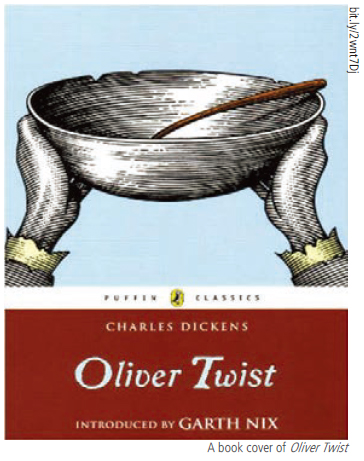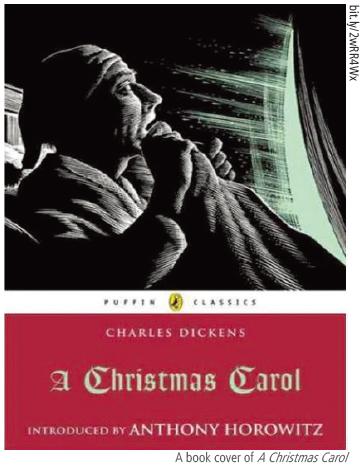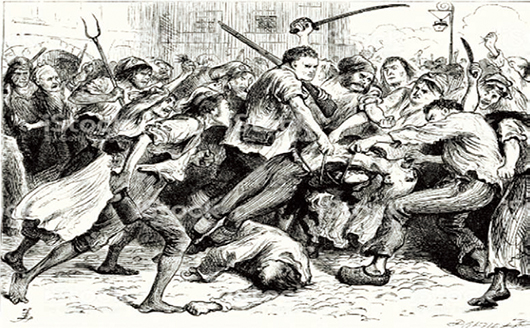
Close your eyes, and recall the memories of your childhood. Now, open your eyes, and look around at your life. Have memories of the past affected the way you live now? Do you think your memories have affected your current decisions? Most people would agree, and actually this is true. Our experiences and backgrounds have a significant influence on our lives. This influence becomes more important to writers, because writing inevitably reflects an author’s experiences. This tendency can be seen in a lot of writers, but The UOS Times has chosen Charles John Huffam Dickens as an example, who lived about 200 years ago during a time of social upheaval and in an unhappy family. Let’s have a look at three of Dickens’s novels to see how his experiences may have affected his stories.

Oliver Twist (1837)
Even though Charles Dickens’s novels consoled people with his witty and humorous expressions, his childhood was not that joyful. Since Charles Dickens’s father, John Dickens, was not good at making or managing money, his family always lived with light pockets. When his father was jailed at Marshalsea Debtors’ Prison because of his liabilities, Charles had to leave school and earn money in a shoe polish factory, all when he was only 12. For the sensitive boy, showing himself to others working in a factory with dirty clothes was considered shameful. The novel Oliver Twist was written based on this experience.
About three years before this novel was first published, the British Government revised its Poor Law. The Poor Law dated back to the 16th century to relieve poverty, and it fulfilled its purpose at that time. No matter how impoverished a family was, they could obtain many benefits so long as they increased the number of family members. However, the revision, the Poor Law Amendment Act, no longer aided the poor. According to these revisions, people who did not have the ability to stand on their own feet could be accommodated only in a workhouse, which was operated cruelly so as not to attract lazy people. It was a workhouse where Oliver Twist was accommodated, who lost his mother as soon as he was born. Since the amount of food provided from the workhouse was ridiculously small, boys living there held a council to choose one who would deliver a demand for more food. Oliver was chosen as the one. The next day, he spoke to the workhouse cook like this.
“Please, sir, I want some more.”
The result was disastrous. As well as having his request rejected, Oliver was expelled from the workhouse.

A Christmas Carol (1843)
Since all of the family members were living in Debtors’ Prison with his father, Dickens had to live alone in London working in a shoe polish factory. At nights, he wandered around the streets of London, thinking that he was forsaken by his parents and that there was nothing that he could rely on. Later, this experience helped Dickens to vividly describe people living in London. In the book Charles Dickens’s London written by Kim Tag-jung, the loneliness Dickens felt during this period is reflected at the beginning of A Christmas Carol. In this novel, the character Scrooge goes back to the past with the Ghost of Christmas Past. When he sees himself reading the story of Alibaba in an empty classroom around Christmas, he cries and regrets the cruel treatment he dealt in the daytime to a child who sang Christmas songs.
Dickens was born in a period of transition. Capitalism was rising suddenly as the industrial revolution began, bringing many changes in politics, society, and culture. However, as Dickens also experienced, poverty and poor labor conditions were predominant throughout the country. At that time, Britain was a hierarchical society with four classes: the royalty, the aristocracy, the middle class, and the working class. Considering the fact that about two-thirds of British belonged to a working class, a class that had to live in unstable working conditions with low wages, British society was not that ideal despite the amazing development.
Dickens, who experienced all these difficulties working 10 hours a day in a deteriorated environment, tried to resolve the problems of his era. According to Kim Tag-jung, Dickens found a solution in families, as Dickens believed that all the happiness in the world starts with the family. Kim finds an example in A Christmas Carol. Members of the Cratchit family were wearing shabby clothes, and none of them were handsome or pretty. Some might say that the family was miserable, but the house was full of laughter and they loved each other. The solution Dickens thought of was a family that cherishes each other by fulfilling their responsibilities and obligations.

A Tale of Two Cities (1859)
Even though Dickens thought of family as a power to overcome difficulties, his married life was not that ideal. In 1835, Dickens married Catherine Hogarth, a Scottish woman, and they had 10 children over a period of 20 years. The early stage of their marriage was quite happy, but problems arose as time passed. The Dickens couple, who lived over 20 years together, separated because of differences in personality in 1858. As he was affected by his broken married life, beginning with the novel David Copperfield, which was published from 1849 to 1850, the atmosphere of his novels suddenly become dark, and humorous expressions decreased. A Tale of Two Cities, written in 1859, also reflects Dickens's gloomy situation, with structure and sentences that are quite emotional unlike most of his earlier novels.
Sometimes, Dickens actively looked for the experiences that would help him complete his works, a practice that helped him reach his standards of perfection. One day, according to one account, he performed a role play that helped him to empathize directly with the anger and psychology of the poor. He appeared in front of his servant wearing tattered clothes. Not knowing that the beggar was his employer, the servant coldly refused Dickens's request for food. The servant pushed Dickens, who fell backwards. Dickens gave the servant a few gold coins and said, “Thank you.” The image of lower status that this role play allowed Dickens to experience is well expressed in A Tale of Two Cities.
As we can see in Dickens's example, a book reflects a writer's life and social background. By trying to understand an author's historical background, not just focusing only on the contents of a book, we may discover much more things than we could find before.
An Yoon-hee
dbsgml2017@uos.ac.kr

